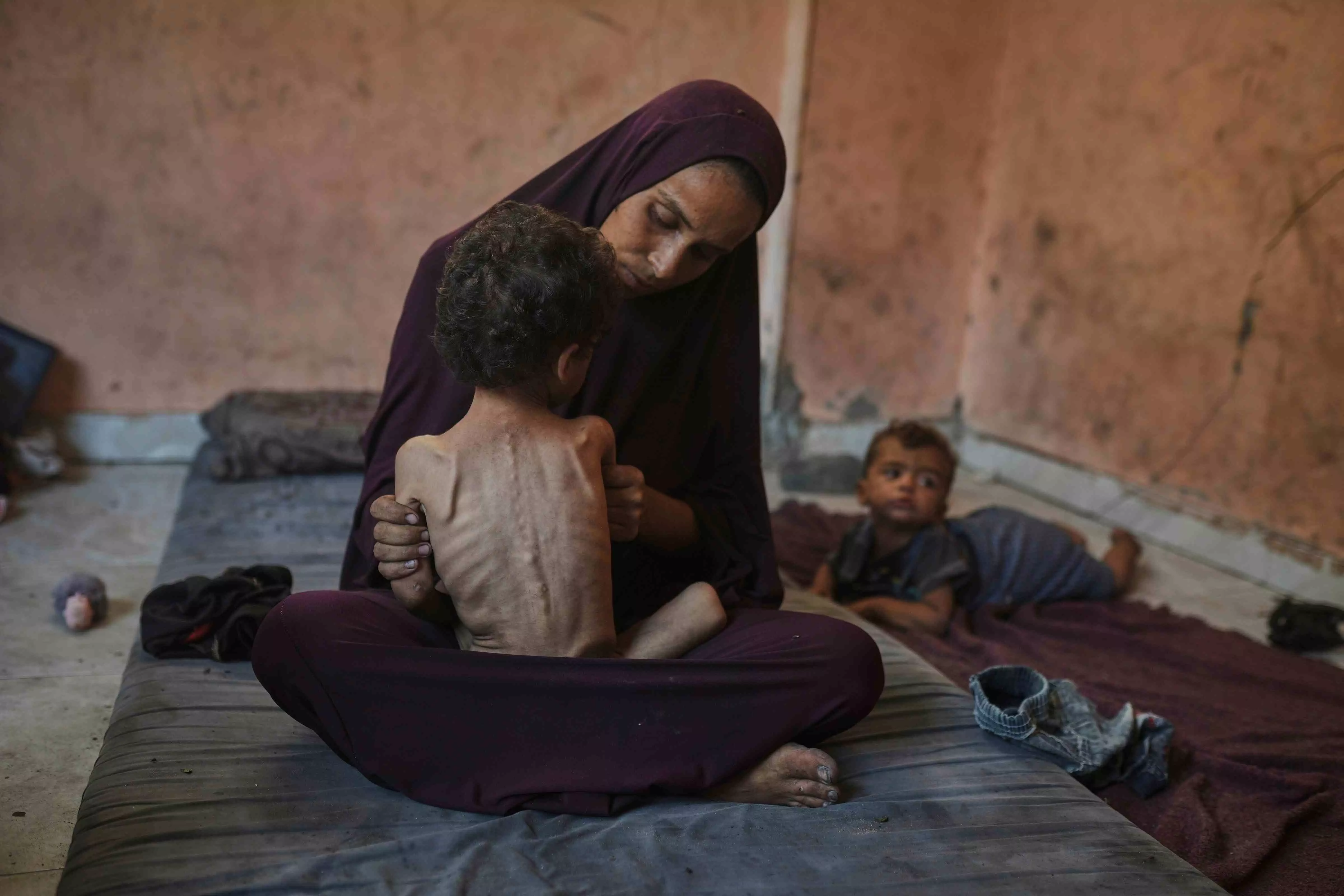The Silent Scream
Starvation, siege, and silence have turned an entire generation of the Gaza Strip into casualties of calculated cruelty and a world’s collapsing conscience

In every war-torn generation, children bear the brunt of destruction, displacement, and despair. Today, nowhere is this more apparent than in Gaza – a region where ongoing conflict, siege, and famine are coalescing into one of the gravest humanitarian crises of our time. The situation has grown so dire that aid organisations and UN agencies have described Gaza as “a graveyard of children” and warned of a man-made famine engineered through violence and deprivation.
Images from the region show emaciated children, their ribs jutting through taut skin, begging for scraps of bread or soup. The UN reports that approximately 100,000 women and children are suffering from severe acute malnutrition, with 30 per cent of the population going days without food. Humanitarian kitchens that once provided daily hot meals have either run out of supplies or been destroyed. This is perhaps even surpassing the condition prevalent at the concentration camps.
The conflict has severely disrupted all avenues for food security in Gaza. Agricultural land has been damaged, supply chains are severed by blockades and ongoing hostilities, and the vast majority of the population has been displaced multiple times, losing their homes and any means of livelihood. This has led to catastrophic levels of food insecurity. UNICEF reports a staggering 180 per cent increase in acute malnutrition cases, and over 100 people, mostly children, have reportedly died from hunger.
In war environments, children, with their developing bodies and reliance on consistent nutrition, are highly susceptible to malnutrition, wasting, stunting, and related diseases. Historical examples abound, from the deliberate starvation tactics employed in the Ethiopian famines of the 1980s, where food was used as a weapon, to the widespread suffering of children during the “Hunger Winter” in the Netherlands during World War II from November 1944 to May 1945 and the devastating Bengal Famine of 1943 in India, where British wartime policies and resource allocation contributed to millions of deaths. Beyond the direct physical toll, children in conflict zones often experience severe psychological trauma, parental separation or loss, and the breakdown of vital social support systems like schools and healthcare.
Like famines of the past, the crisis in Gaza extends beyond mere food deprivation. The destruction of infrastructure has crippled access to clean water and sanitation, leading to widespread infectious diseases that further weaken already malnourished children. The healthcare system is shattered, with most hospitals damaged or destroyed.
The ongoing conflict has decimated Gaza's healthcare infrastructure, leaving hospitals like Al-Shifa overwhelmed. According to MedGlobal, the crisis extends beyond a lack of food. Children are succumbing to conditions that would otherwise be manageable, largely due to the absence of crucial medical supplies such as IV fluids and therapeutic treatments, which are vital for survival in famine-stricken areas.
BBC correspondents have described the horror of filming children who are so thin and sickly that they can barely stand. One cameraman recounted the agony of documenting the life of Siwar Ashour, a five-month-old girl suffering acute malnutrition. Her mother’s desperate plea to ‘let her grow and play like other children’ echoes the silent cry of thousands of mothers across Gaza.
What sets the current crisis in Gaza apart is the systematic nature of the deprivation. UN officials and aid agencies have accused Israeli forces of engineering a famine by blocking aid, targeting infrastructure, and firing on civilians trying to access food. The World Food Program and UNRWA report that more than 5,000 trucks carrying lifesaving supplies are waiting at entry points but have been denied access due to bureaucratic or military restrictions.
In a haunting statement on X on July 11, UNRWA chief Philippe Lazzarini declared, “Gaza has become the graveyard of children (and) starving people.” He added that families are now choosing “between two deaths: starvation or being shot at” while trying to access food.
Resurfacing videos of silent symbolic gestures like a Swedish MEP who spent most of her allotted speaking time at an EU parliamentary session in silence to protest Israel’s war on Gaza, before saying there were “no more words to speak about what’s going on in Gaza” and that “human rights have a skin colour” or other videos of people protesting have been turned a deaf ear to, as the unending ‘annihilation’ of an entire living humanity in this region continues.
As the world moves on, it has perhaps forgotten that it is not just witnessing a humanitarian crisis; it is witnessing the destruction of a generation. The war in Gaza has reduced childhood to survival. Where there should be learning, there is loss; where there should be laughter, there is hunger. It is a humanitarian emergency of the highest order, and a profound moral failure.
The writer is Programme Executive, Gandhi Smriti and Darshan Samiti. Views expressed are personal



